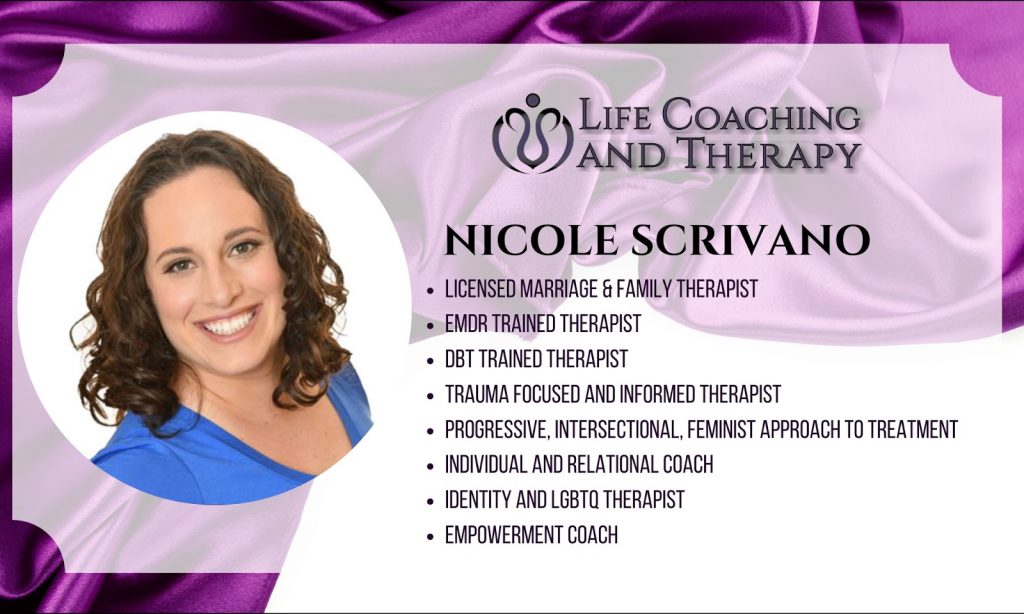The Boundary Trap – What are Boundaries?
The Boundary Trap – What are Boundaries?
Boundaries have become the new buzzword – so what the heck are they?
They are ways to create limits or express needs.
They can be physical, emotional, spiritual, verbal, sexual, etc.
Boundaries are the ways in which we say what is or is not okay for us. This could be in the way we want to be communicated with, the way we are loved, the way we are touched, the way people show up for us, and the way people speak to us.
Our culture sucks with boundaries… which is probably why boundaries have become such a buzz word in our society now. Our culture has focused on what I call: aggressive, active, or passive boundaries.
In the United States, we live in a dominating society where aggression and dominance are reinforced… down to the ways we even communicare.
Aggressive, Passive, or Active?
Most of my clients come to me either utilizing aggressive or passive boundaries.
Aggressive boundaries can use physical or (most often) verbal strategies.
Aggressive boundaries is engaging in what I consider to be dominating, abrasive, coercive, demanding, controlling, shaming, blaming, or critical tactics. In my experience, these strategies result in compliance, rebellion, or conflict. None of which work towards connection and understanding. These boundaries are typically “at someone” and can be reactive boundaries. This is usually as a result of not having boundaries respected unless they were loud and big.
An example of an aggressive boundary would be: “You can never do anything right. Don’t help me anymore because you are an idiot. I know what is best and you either need to get on board or else.”
Passive boundaries are people who either do not set boundaries at all or are VERY unclear. People who struggle to set boundaries at all usually fall in this category.
People who set passive boundaries often feel resentful because those around them do not understand the boundaries resulting in these individuals overgiving. These individuals may be conflict avoidant, may have not learned how to have a voice, or learned their needs were not important.

An example of passive boundaries would be:
- feeling uncomfortable with something someone is doing and saying nothing
- not responding
- lying about your feelings such as saying “its okay”
- over-committing and saying “yes” when you mean “no.”
- Saying “whatever you want to do”
- Using vague language like “I mean maybe it’s a sorta thing that I….”
Passive Aggressive is the combo platter of boundaries. It is vague statements or boundaries that usually are accompanied by sarcasm, anger, or contempt.
People who set passive aggressive boundaries are often unclear, rude, indirect in trying to get what they want or need. People who are passive aggressive often do not know how to get their needs met, may be conflict avoidant, or struggle to be vulnerable.
An example of this would be: “I guess I didn’t need that anyways” with a sarcastic tone or non-descript tone.
Active Boundaries are clear, compassionate, and communicative. Active boundaries are when we are able to share what we need without engaging in violent communication techniques.
These boundaries show how we need or what we want from others without engaging in destructive communication patterns that create disconnection and conflict.
An example of this would be: “I feel really frustrated and hurt when you speak to me that way. I would ask in the future that we work together on communicating differently so that we both feel more safe.” or “I am noticing that I am uncomfortable when you touch me like that, is it possible for you to ask in the future? If you cannot do that, I am going to have to find another way to feel like I can be more comfortable around you.” or “In the future, when you go to get something to eat can you please also reach out if I need anything to? I felt really hurt when I did not have dinner too. In the future that would be so cool because I would feel really loved and seen.”
Boundaries, PEOPLE!
So often we struggle to do this. It is so important that we find ways to communicate our needs through boundary setting. At LCAT, we use Marshall Rosenberg’s Nonviolent Communication as a guide to help our clients and ourselves navigate these difficult conversations.
Boundaries are not something many of us are comfortable with in our culture and it is so important that we remember boundaries are FOR US not AT others.
When we are able to focus on boundaries being for us and not AT others, we are more able to set them in an active way rather than a passive and/or aggressive way.
Let us help you get there!
We are here to help at LCAT, we have various therapists who have training and understanding in all the A/a’s. Please join us on your healing journey!
YouTube page where she provides free information at The Sex Healer.
If you know someone that would benefit from this information, feel free to share it.
Life Coaching and Therapy (LCAT) is a relationship coaching and sex therapy practice that transforms our clients lives through our flexible, multi-technique approach and pleasure-skills training provided by systemically-trained and licensed therapists!
Our team of compassionate, licensed therapists and certified sex therapists help Millennials and Baby Boomers alike who visit us for a variety of relationship, intimacy and sex problems.
LCAT provides on-site appointments, as well as video chat and text therapy programs. For clients hoping to take their intimate lives to the next level through personalized coaching on YOUR terms, learn more about our Text Therapy Program.
Learn more about how LCAT can help improve your life at What We Do.
Call or text us at 203-733-9600 or make an appointment.





